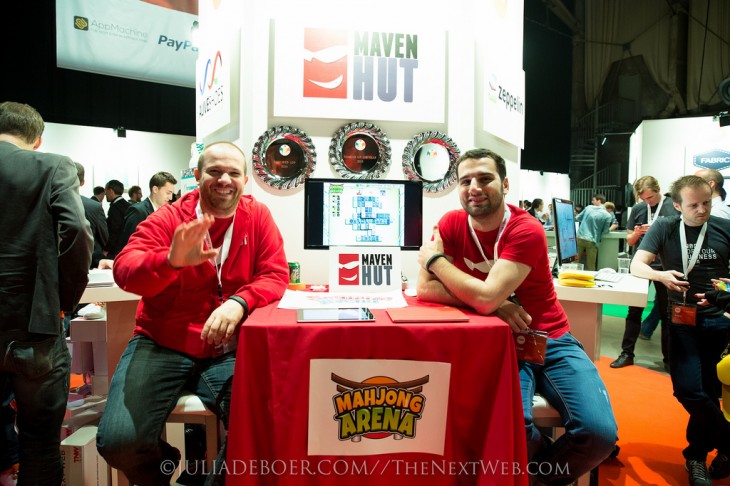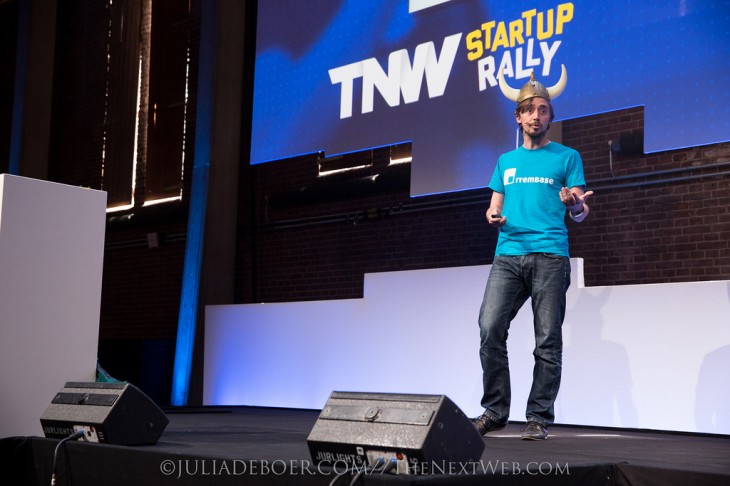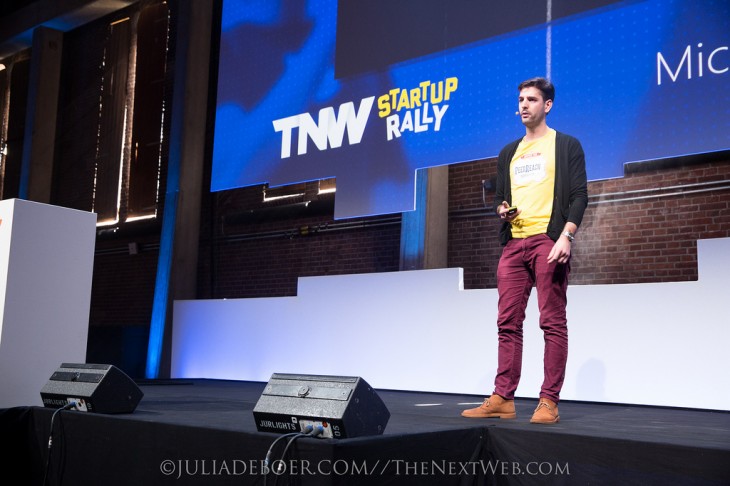
Accelerators are often exciting, collaborative and deeply rewarding incubators that help you to grow your startup, develop a product or idea, and find follow-on investors.
Although there are hundreds of accelerators to choose from, you’ll be competing against thousands of other applicants all vying for the chance to learn from one of these life-changing mentoring programs. To help you stand out from the crowd, we asked Kirsten Campbell, General Manager for Seedcamp and Simon Jenner, CEO of Oxygen Accelerator for some inside knowledge.
Take part in a pre-accelerator
If you’ve never part of a startup before, sometimes taking the first steps are the hardest of all. Even if you have the next multi-billion dollar idea, you need a little business know-how before you get stuck into a full-fledged startup accelerator. That’s where a pre-accelerator such as NEXT or Launch48 comes in.
“I highly recommend that startups do one of those,” Jenner says. “It gets you in the right mindset and it gets you ready to do a lot of the work. A pre-accelerator is a bit like a nursery: it just gets you thinking about the right areas and knowing the right phrases.”
Explain your idea in simple terms
A concise, straightforward explanation of your business is paramount. In an application form or pitching session, you only have a short amount of time to make a lasting impression, so don’t waste time with a long-winded rationale.
“If it’s not simple, really try to make it simple,” Campbell says. “Really try to shorten it so people might not fully understand what it is, but they get the gist.”
Keep your answers short
When you’re filling out an application form, it can be tempting to write long, in-depth responses to each question. Such an approach might show that you’re keen, but it also suggests an inability to articulate your ideas.
“One of our questions is to explain your business in two sentences, or fifteen seconds,” Campbell explains. “You will find some people who literally write an essay. At what point did you read that back and think that was fifteen seconds? So by default you look more negatively upon them, because you should be able to communicate what you do.”
Likewise, give quick and well-articulated answers when you pitch to a panel. These sessions are usually short and judges want to find out as much as they possibly can about your team and idea. Try not to babble, or they’ll be unable to explore and comprehend your idea.
“Give short answers so people have an opportunity to ask more questions,” Campbell says. “People feel like they want to to answer everything in that one question, so they’ll ramble on for three or four minutes and then that’s it, time is up and they’ve only answered one question. So keep them short and concise.”
Be original
You’re far more likely to be get onto a startup accelerator if you’re working on a truly unique and novel idea. Many businesses thrive by delivering an existing product better than their competitors, but to stand out in an application form or pitching session, it’s hard to forget an inventive, wonderful idea.
“Some kind of originality and something that’s really got some new tech in it,” Jenner says. “So that it’s not just another copy, because by and large most of them can’t compete – so we need to find something that can compete. I reckon those come from people that have been in the industry, that have an insight into a given sector or something. Then tend to be the better, stronger startups.”
Show that your product already has traction
Sadly, some of the best ideas never find their audience. Likewise, some fantastic startups struggle to monetize their business (Everpix is the perfect example). Accelerators are looking for startups that will succeed in the real world and eventually recoup their investment.
“We’re investing, so at the end of the day we want it to be a success,” Jenner says. “It’s got to have a prototype, so something that is being built and tested (so it’s beyond the idea phase) and they’ve actually got some form of traction. That varies though, as we’ve turned down apps that have 100,000 downloads and we’ve taken apps that have no downloads. It’s a bit of grey area, but it needs some form of traction.”
Be realistic with your valuation
If you’re asked to give a valuation for your startup, be honest. The person reading your application form will have a wealth of experience in this area and know if you’re applying the infamous ‘reality distortion field’ pioneered by Apple co-founder Steve Jobs. “So literally, they have no idea and they’re valuing their company at £2 million or more, something ludicrous,” Campbell said. “So by default you’ll just say ‘next…'”
Know your market
Successful startups know who their competitors are and how they can beat them. To join an accelerator, you’ll need to show an in-depth understanding of your target market and the companies that are already dominating that space.
“It’s really easy to see the ones that haven’t got a clue,” Jenner says. “You say ‘have you not heard of this company, have you not heard of that company, and they just crumble at that point. There is no point flying halfway around the world to pitch if you haven’t done your basic homework.”
Don’t pitch via Skype
Most accelerators ask that you submit a written application before pitching to a panel of judges face-to-face. Some programs such as Oxygen Accelerator will allow you to pitch your idea over Skype or Google+ Hangouts, although that’s probably not the best idea.
“I’ve looked at the stats and you’re far less likely to get in – at least with our accelerator – if you pitch via Skype or Google+ Hangouts, versus coming in person,” Jenner said. “There is less of a connection and ultimately, the panel is trying to connect with you.”
That’s not to say that it’s impossible to get in with this approach, however. A number of startups have pitched effectively over Skype by understanding what comes across well and practising it with other people beforehand. Nevertheless, your chances of being accepted are increased if you attend the panel in person.
Keep their attention
A stellar presentation is memorable. Unforgettable, even. It’s an idea, or a visionary that lingers in the back of your mind for days or weeks following the pitching session. There are no sure-fire ways to achieve this, but it’s important to hold the attention of the panel at all costs.
“[One founder] really focused his presentation,” Campbell recalls. “He did it to so many friends and said afterwards, ‘what did you remember?’ So he really made sure he accentuated the key bullet points by raising his voice or by speaking softer and then he tested it, to make sure the key messages stuck in people’s minds. That’s a super smart way of doing it.”
Demonstrate your product
If you have an idea that is difficult to articulate, just show it. Actions speak louder than words, so a well-choreographed demo can be the perfect way to re-energize a dry or meandering presentation.
“If they’ve got a demo, we absolutely want to see it,” Jenner said. “That shows they’ve actually built something, it’s real and it’s there. Bring the physical device, or if it’s a web or mobile app, show us the app. That wins every time.”
A live demo can be dangerous though. If your product is still in development, there’s a chance it will behave unexpectedly or crash at the worst possible moment. Campbell recommends screenshots, a promo reel or photos of your idea in action. “If you have something, show it,” she adds. It explains what you do and it shows the quality of what you do. If you’ve got a nice UX or design, or know what’s special about it, it just fills the audience with confidence. Otherwise, it remains a bit of a mystery.”
Be honest
A simple rule, but one that many startup founders forget when they’re put under the spotlight. If you don’t know the answer to a certain question, just be honest. It’s all part of the learning process.
Don’t focus on the technology
When you’re pitching to a panel of judges, you only have a few minutes to make an impression. Don’t waste precious time explaining the codebase or algorithms that you’ve used: a judge will ask about this if it’s important to your idea during the Q&A or after the pitching session.
“Most people are tech savvy and they will probably understand, but that’s not always the case and you have to bear that in mind,” Campbell says. “If you presented it like that, would your mum understand it? Would your gran understand it?”
Jenner adds: “Do we care? No, we don’t. We will pretty much support any tech that it’s built on, it doesn’t really matter. What might be interesting is: What’s unique about the way you built it?”
Keep your pitch short
Many startups create a thorough half-hour presentation and then try to condense it into a pitch that is five minutes or less. This encourages you to skim across large amounts of inconsequential informational and deliver it far too quickly for a judge to absorb.
Instead, the trick is to start with a blank slideshow and build it up from scratch, based on your time allocation and the people that you’re pitching to. It might be more work, but this approach will result in a far more effective slide deck.
“Start from a blank PowerPoint, or whatever it may be, and bullet point, ‘these are the things I want to say’ and start with that,” Campbell says. “If you do it the other way around and you think about your whole story, you’ll never be able to get it all in.”
Use a single presenter
You might have founded a team that could rival the Avengers. They’re all fantastic in their own way, with diverse skill sets and a tremendous amount of passion. For a short, 5 minute pitch though you want a presentation that is simple, slick and an eloquent sense of flow. To do that, you’re better off pitching with a single presenter.
“Particularly with a five or three minute pitch, you don’t have time to start swapping over and usually that’s where the issues occur,” Jenner says. “So we tend to go with one person, but we do like to see the team so even if that’s during the Q&A, you should bring up the rest of the team for questions.”
Pick a confident speaker
Who should deliver your pitch? Most startups will pick their CEO, but that’s not a steadfast rule. Instead, you should look at everyone in your team and pick the person who is best at explaining and selling your idea.
Campbell said: “Regardless of their role, who is the most confident? If that’s the Chief Technology Officer, or the sales chief, or the marketing person, whoever is the best public speaker, you should always put your best foot forward.”
Many startup accelerators will be pretty forgiving about the delivery of your pitch, however. After all, it’s their job to teach you many of these skills once you’ve been accepted onto the program.
“We’re taking startups early, so we can fix people that can’t pitch, we can fix people that can’t present, or haven’t quite got the communication or messaging right,” Jenner said. “We’re trying to dig below that and say ‘is there something here’ and that usually comes out in the questions.”
Know your baggage
The way your startup was founded and financed until now will affect your eligibility for a startup accelerator. Understanding the history of your company, and what that means for future investments, can you save a huge headache further down the road.
“We saw a few quite recently where founders had given up 70 percent of equity to a really early stage seed investor,” Campbell said. “That’s just ludicrous, because if the company wants to grow and get follow-on funding they’re going to need more money and you want the original funders to be incentivized. So if they’re already diluting that between them, they only own 30 percent or 15 percent each and by default they’ve priced themselves out by giving away far too much, far too early.”
Try, try, try again
If you don’t get into a startup accelerator on your first attempt, don’t be disheartened. Teams are encouraged to pitch again once they’ve had the time to develop their idea further. It’s not a matter of what or who, but when.
Jenner says: “Everyone is on a journey and it just depends if you’re in the right space, at the right time for us or any other accelerator.”
Image Credit: Julia De Boer/Flickr (2) (3) (4) (5)
Get the TNW newsletter
Get the most important tech news in your inbox each week.








